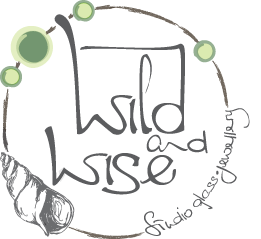 Louisbourg lighthouse - Louisbourg, Cape Breton
Louisbourg lighthouse - Louisbourg, Cape Breton
in the first of this blog series i mentioned that glass intrigues me.
glass is common. it is everywhere. in our homes and on our screens. and the reason for writing these blogs is to try to come to the understanding of why glass. why does something so common appeal to me so much?
it is hard to imagine that something so widespread today was once traded as a gemstone.
although you can see why - glass is hard, cold, immovable, but with a transparency and a lustre; a depth and a warmth.
refutably, glass has been found as far back as 2600 BC (there is some debate that this isn't glass but glazed ceramics with true glass coming later in conjunction with copper smelting).
it is reasonable to assume that throughout history those that made glass and those that used it would have been separate. the equipment needed to make glass is so specialized it would be difficult for a craftsperson to obtain. so, originally, a craftsperson would have received glass in chunks - much like stone. glass lapidary practices (like those still used today on gemstones) would have been the norm before lampworking (or flameworning) and glass blowing were introduced.
glass is one of those items that throughout history has been intrinsically tied with wealth, power, politics, science, and technology.
by 1700 BC, glass manufacturing was well established in Syria and used by the Egyptians by about 1450 BC. They were not blowing glass yet, but were able to melt glass and make different coloured glasses in a furnace.
 Egyptian glass jars, circa 1353-1323 BC. complex forms that are as beautiful and intricately designed as anything you would see today. Image The Metropolitan Museum of Art
Egyptian glass jars, circa 1353-1323 BC. complex forms that are as beautiful and intricately designed as anything you would see today. Image The Metropolitan Museum of Art
by 1200 BC, glass was being cast in molds and by the 2nd millennium BC, glass beads had appeared. around 10th century AD, science and technology had allowed glassmakers to shift their formulas resulting in less expensive, easier to obtain materials which meant that by the 12th century, there was an increased use of window glass.
the Crystal Palace mentioned in my last blog post was designed and built to host the first world's fair. The Great Exhibition was a celebration of industry and all it could create.
in this industrializing world, shipping by sea became very important.
and dangerous.
many lives and goods were lost by ships running aground or crashing on unseen rocks.
a map of the hundreds of Seal Island shipwrecks that hangs in the Seal Island lighthouse museum - Barrington, NS
in the attempt to save lives, bonfires were lit to help guide sailors. later, these were elevated on structures for better range. eventually bonfires became coal fires, and then candles and oil lamps. but an open flame looses 97% of its light and an open flame with reflectors behind it looses 87% of its light.
years ago, we went to the Seal Island lighthouse museum. the museum is a half-sized replica of the original lighthouse that once stood in a collection of rocky and deadly islands. the young interpreter had told us that "sea wolves" was the name given to the hidden rock outcroppings that had taken so many lives in the area.
i have always loved the image of the mighty lighthouse keeping the sea wolves at bay.
by 1822, the Fresnel lens was invented.
Fresnel's understanding of glass' ability to reflect, refract and polarize meant that he created a lens in which only 17% of light is lost.
so specialized for its time, the original glass for the prisms in the Fresnel lens were formed and machined in a specially designed factory. lost to bombing in WWII, the factory was never rebuilt - making the original Fresnel glass not only a scientific and technological feat for the time, but also very valuable today.
The top level of the Seal Island lighthouse museum holds the original Second-Order Fresnel lens. a first-order lens can stand over 12', weigh 6-8 tons, and has 1,176 prisms and 24 bullseyes all bending and magnifying light.
 a Second-Order Fresnel lens in the Seal Island lighthouse museum, Barrington NS, which operated from 1902-1978.
a Second-Order Fresnel lens in the Seal Island lighthouse museum, Barrington NS, which operated from 1902-1978.
making glass is a process that has stretched the technological limits of every age and it continues to today. this segment from How It's Made about Ultra Thin Glass is a great example of how technology and glass production is still linked. as we continue to push glass production to new heights, the glass made in this episode is so thin that it can bend like paper. it seems incredible and yet it is a glass that the great majority of us carry on our person day in and day out.
glass remains a dominant material in our lives. from looking out into the world from our homes, trying to harness light, searching for a BPA-free substitute for our food and beverage storage, or swearing at a cracked mess of a cell phone screen, we continue to look to glass as a solution to our problems and as a key player in our technological advancement.


 Louisbourg lighthouse - Louisbourg, Cape Breton
Louisbourg lighthouse - Louisbourg, Cape Breton
 Egyptian glass jars, circa 1353-1323 BC. complex forms that are as beautiful and intricately designed as anything you would see today. Image
Egyptian glass jars, circa 1353-1323 BC. complex forms that are as beautiful and intricately designed as anything you would see today. Image 
 a Second-Order Fresnel lens in the Seal Island lighthouse museum, Barrington NS, which operated from 1902-1978.
a Second-Order Fresnel lens in the Seal Island lighthouse museum, Barrington NS, which operated from 1902-1978.